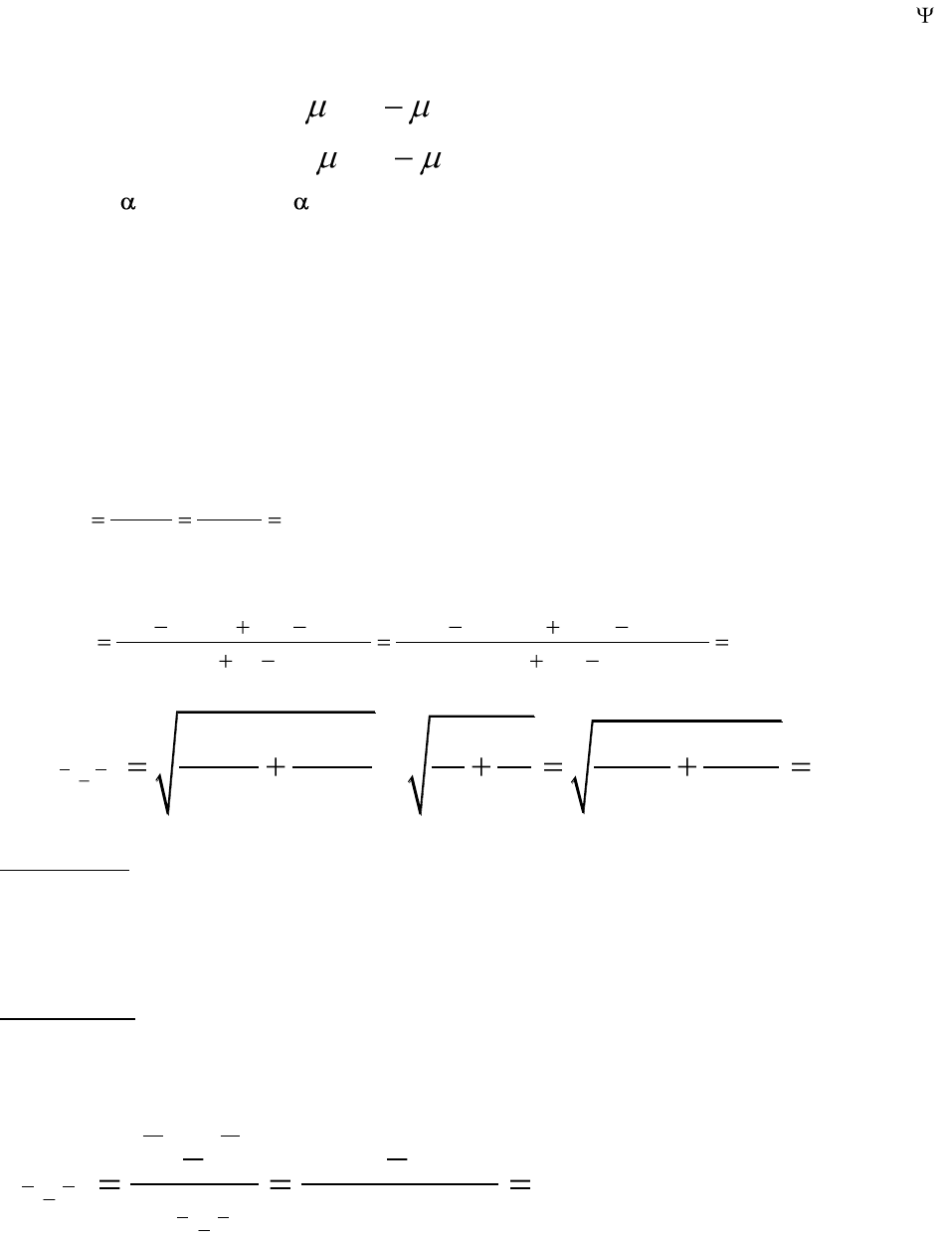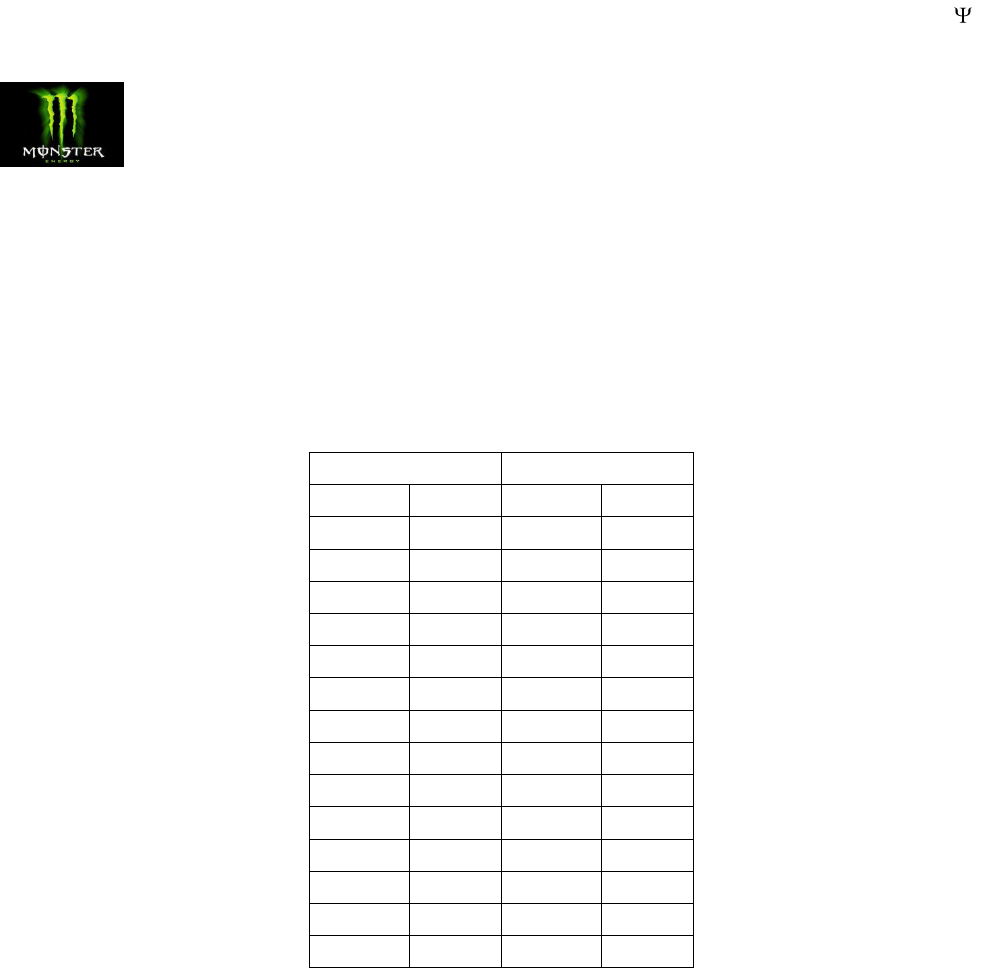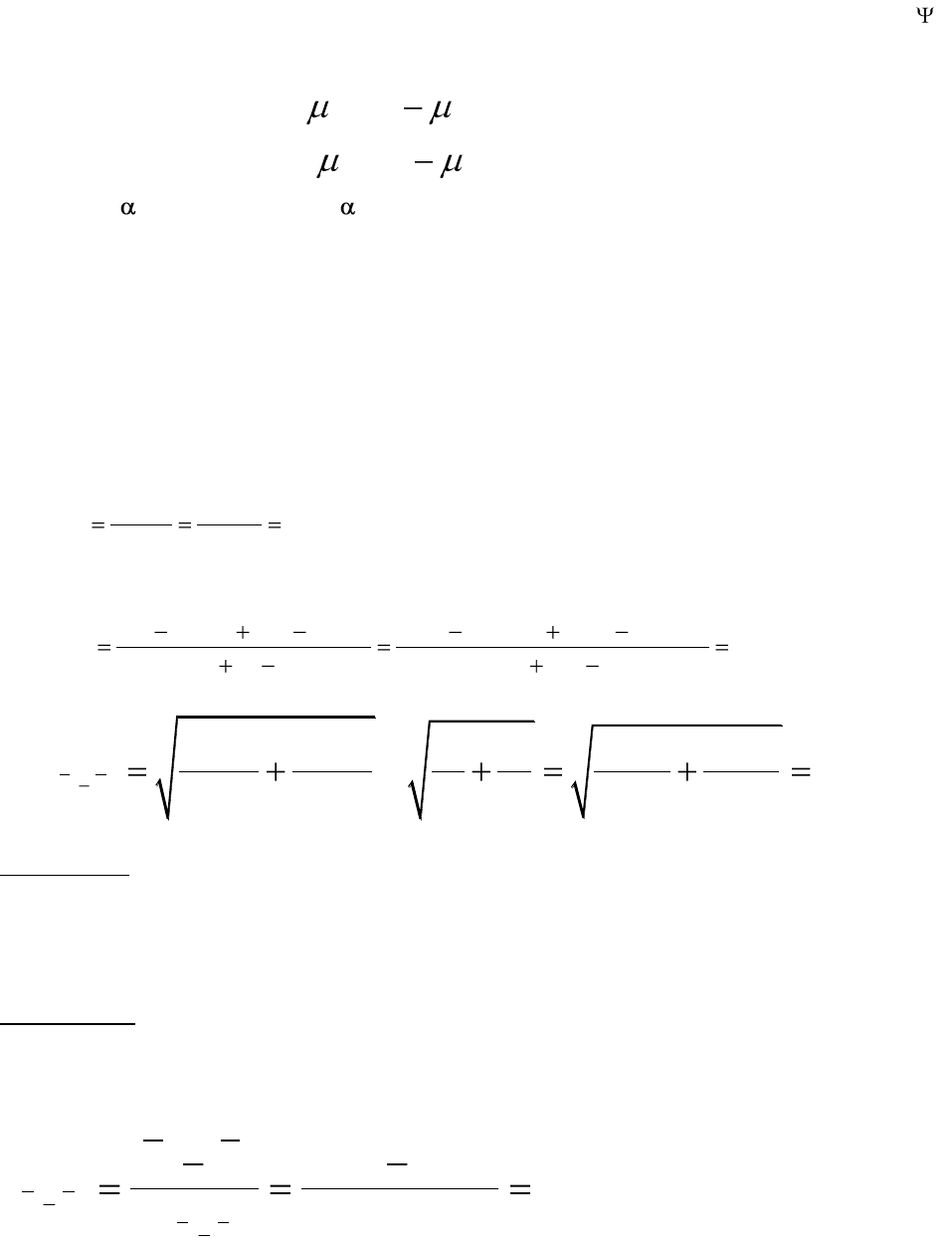
320
Ainsworth
Example Problems: Independent Samples Test
Example 1: A couple of male grad students met at the
annual American Psychological Association
conference last year, one of them was a grad student
from CSUN and the other was a grad student at UCLA. After a short period they began discussing the
joys of going to school in southern California and after a few drinks the conversation quickly turned into
an argument about which school CSUN or UCLA had a more attractive psychology undergraduate
female population. The CSUN grad argued that CSUN undergraduate females in psychology at CSUN
are more attractive and the UCLA grad argued that the UCLA undergraduate females in psych are
more attractive. So as graduate students they decided to use their research abilities and answer the
questions scientifically. They both randomly selected 35 undergraduate female psych students and
asked them if they were willing to participate. Of the 35 solicited from each school, 33 agreed to
participate from UCLA and 30 from CSUN. Each participant’s photo was shown to a panel of judges
and the average score (out of 10) is shown for each participant in the table below. Which school has
the more attractive psychology undergrad population?
UCLA
CSUN
Subject
Rating
Subject
Rating
1
4
1
8
2
6
2
7
3
6
3
7
4
8
4
8
5
3
5
5
6
3
6
6
7
7
7
6
8
4
8
6
9
3
9
7
10
5
10
9
11
7
11
7
12
6
12
8
13
8
13
6
14
6
14
7
15
8
15
6
16
4
16
8
17
3
17
7
18
5
18
7
19
7
19
8
20
3
20
7
21
6
21
8
22
4
22
9
23
6
23
8
24
3
24
7
25
5
25
8
26
2
26
7
27
4
27
6
28
6
28
7
29
5
29
7
30
7
30
7
31
4
32
2
33
3
Mean
4.939
Mean
7.133
StDev
1.784
StDev
0.937
vs.

320
Ainsworth
1. State Null Hypothesis
0
: ____0
UCLA CSUN
h
2. Alternative Hypothesis
1
: ____0
UCLA CSUN
h
3. Decide on (usually .05) = _____
4. Decide on type of test (distribution; z, t, etc.)
Questions to ask:
a. Can we treat the scores as independent (e.g. they are NOT from the same person, they are
NOT matched subjects, they are NOT related subjects, etc.)?
If Yes, then continue with the independent samples t-test
If No, STOP you may need to perform a dependent samples t-test
b. Can we assume a normally distributed sampling distribution?
In other words, do we have 30+ participants in each group OR a normally distributed population(s)?
If yes, then continue.
If no, do not continue, the test cannot be performed.
c. Do the two groups have homogenous variances?
2
Largest
2
Smallest
_____
_______
_____
MAX
s
F
s
, if this value is smaller than 3 pool the variance, if it is larger
than 3 do not pool the variance.
d. What is the pooled variance?
22
2
1 1 2 2
12
[( 1)* ] [( 1)* ]
[(___ 1)*___] [(___ 1)*___]
2 ___ ___ 2
pooled
n s n s
s
nn
e. What is the standard error of the difference?
12
22
22
12
1 2 1 2
____ ____
___ ___
pooled pooled
XX
ss
ss
s or
n n n n
5. Find critical value & state decision rule
Critical Value
Questions to ask:
a. Is this a 1-tailed or a 2-tailed test? _________
b. It is a t-test, so what are the degrees of freedom (If homogenous variances, DF = n
1
+ n
2
– 2, if
heterogenous variances DF = smaller n - 1)? _________
Use alpha, the number of tails and the degrees of freedom to look up the critical value in a t-table.
Decision Rule
In words: If t
observed
is larger than t
critical
reject the null hypothesis
In numbers: If _______ > ________ reject the null hypothesis.
6. Calculate test
12
12
12
____ ____
____
XX
XX
XX
t
s
7. Apply decision rule
Since, _______(i.e. observed value) ____ (i.e. >, <) _______ (critical value), _________(i.e. DO or
DO NOT) reject the null hypothesis.

320
Ainsworth
Example #2: A cognitive psychologist was reminiscing about graduate school and
remembers that he probably would have never made it through had it not been for
“energy drinks” like Monster. Many endless nights of writing, reading or both were
followed by long days of classes, running subjects and more reading and writing and it was drinks like
Monster energy drink that kept him from crashing. As he thought more about it, it seemed that Monster
helped him more than most of his classmates who drank coffee. Sure, they were awake but their
cognitive abilities always seemed a little more taxed than his or other folks’ that drank Monster. To test
this hypothesis he randomly selected 24 students and had them “pull an all nighter”, he than randomly
assigned them to either drink coffee or Monster. He tested their cognitive ability using the CSB
(cognitive skills battery), which is known to have a normal distribution in the population, and the results
are shown in the table below. Does drinking Monster lead to higher cognitive functioning after a night
of little or no sleep when compared to coffee (use an alpha level of .01)?
Coffee
Monster
Subject
Score
Subject
Score
1
30
1
35
2
42
2
50
3
27
3
51
4
37
4
53
5
31
5
55
6
28
6
63
7
30
7
45
8
36
8
53
9
42
9
50
10
39
10
44
11
51
11
71
12
38
12
47
Mean
35.917
Mean
51.417
StDev
7.090
StDev
9.170

320
Ainsworth
1. State Null Hypothesis
0
: ___0
Monster coffee
h
2. Alternative Hypothesis
1
: ___0
Monster coffee
h
3. Decide on (look in the text) = _____
4. Decide on type of test (distribution; z, t, etc.)
Questions to ask:
a. Can we treat the scores as independent (e.g. they are NOT from the same person, they are
NOT matched subjects, they are NOT related subjects, etc.)?
If Yes, then continue with the independent samples t-test
If No, STOP you may need to perform a dependent samples t-test
b. Can we assume a normally distributed sampling distribution?
In other words, do we have 30+ participants in each group OR a normally distributed population(s)?
If yes, then continue.
If no, do not continue, the test cannot be performed.
c. Do the two groups have homogenous variances?
2
Largest
2
Smallest
_____
_______
_____
MAX
s
F
s
, if this value is smaller than 3 pool the variance, if it is larger
than 3 do not pool the variance.
d. What is the pooled variance?
22
2
1 1 2 2
12
[( 1)* ] [( 1)* ]
[(___ 1)*___] [(___ 1)*___]
2 ___ ___ 2
pooled
n s n s
s
nn
e. What is the standard error of the difference?
12
22
22
12
1 2 1 2
____ ____
___ ___
pooled pooled
XX
ss
ss
s or
n n n n
5. Find critical value & state decision rule
Critical Value
Questions to ask:
a. Is this a 1-tailed or a 2-tailed test? _________
b. It is a t-test, so what are the degrees of freedom (If homogenous variances, DF = n
1
+ n
2
– 2, if
heterogenous variances DF = smaller n - 1)? _________
Use alpha, the number of tails and the degrees of freedom to look up the critical value in a t-table.
Decision Rule
In words: If t
observed
is larger than t
critical
reject the null hypothesis
In numbers: If _______ > ________ reject the null hypothesis.
6. Calculate test
12
12
12
____ ____
____
XX
XX
XX
t
s
7. Apply decision rule
Since, _______(i.e. observed value) ____ (i.e. >, <) _______ (critical value), _________(i.e. DO or
DO NOT) reject the null hypothesis.
